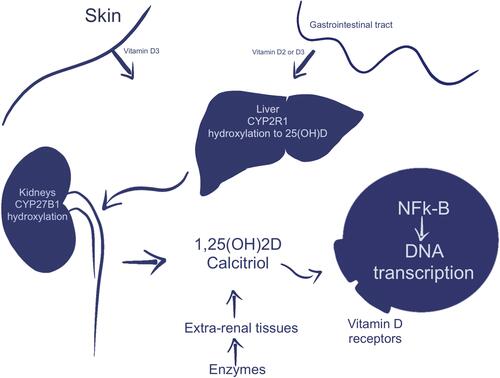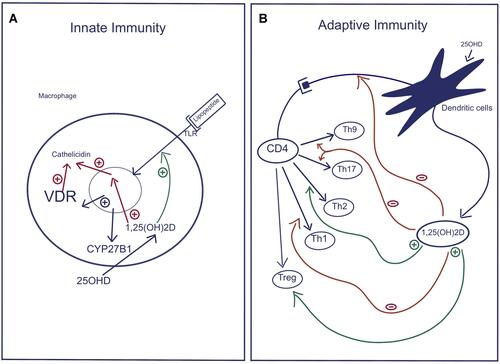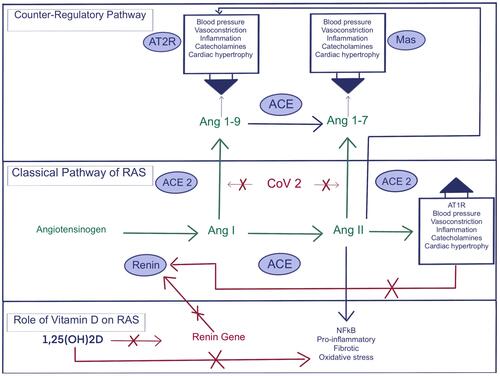Figures & data
Figure 1 Synthesis and metabolism of vitamin D. Consecutive metabolic processes convert biologically inactive, parental vitamin D into active form.

Figure 2 Role of Vitamin D in regulation of the innate and adaptive Immune Pathways. (A) Innate immunity: Activation of selective Toll-like receptors (TLR1/2) by products of infectious organisms results in the induction of both VDR and CYP27B1. With adequate substrate 25(OH)D, 1,25(OH)2D is produced that, in combination with VDR, induces the formation of antimicrobial peptides such as cathelicidin, which are capable of killing intracellular organisms. (B) Adaptive immunity: 1,25(OH)2D, which is produced by dendritic cells, decreases the maturation and antigen presenting ability of dendritic cells and alters the profile of T helper cells that differentiate from the activated CD4 parent cell, precisely, reduces the formation of Th1, Th17, and Th9 cells, while promoting the differentiation of Th2 and Treg cells. The result is overall suppression of the adaptive immune pathway.

Figure 3 The Classical RAS Pathway, The Counterbalance Regulatory Pathway, and the role of vitamin D in controlling the RAS pathway. Note: Some of the data is from Biesalski.Citation70

